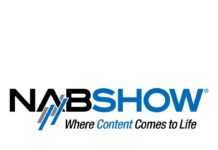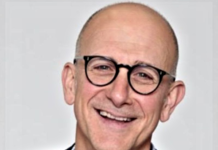
(By Bob McCurdy) We all know about radio’s great reach story but does the rate at which that “reach” builds, often referred to as “reach velocity,” matter? To many advertisers it does. Particularly those that are touting time-sensitive events or marketing fast-moving consumer goods (FMCG). Respected researcher and media executive, Bill Harvey, has written about this phenomenon in the past and it is worth some discussion.
Aside from reach velocity’s role in recency, i.e. minimizing the time gap between each purchase occasion and the last advertising brand exposure, it is also one of the reasons why advertisers lean toward TV, as they are attracted to the fact that they can reach a lot of consumers quickly with highly rated programs. It’s why they flock to the Super Bowl, prime-time shows, the Oscars and NFL football, like moths to a flame, all which provide them with a fast, easy route to a large number of consumers.
But what’s gone under-appreciated, often due to the manner in which radio commercials are scheduled, is the fact that radio can compete with TV in generating reach quickly.
To better understand how to schedule for maximum reach and reach velocity, it is important to be familiar with a fact that holds true for every media channel and every product/service and that’s that a minority of users typically account for a majority of usage, while the majority barely interact with a product/service or media channel.
The chart below illustrates this point:
 What’s becomes quickly apparent upon review is that a relatively small percentage of each station’s total listening base (P1’s) accounts for a disproportionately large amount of total station listening and if not taken into consideration when scheduling, this results in advertiser’s piling up a lot of frequency against a small percentage of any stations audience. This limits reach and reach velocity.
What’s becomes quickly apparent upon review is that a relatively small percentage of each station’s total listening base (P1’s) accounts for a disproportionately large amount of total station listening and if not taken into consideration when scheduling, this results in advertiser’s piling up a lot of frequency against a small percentage of any stations audience. This limits reach and reach velocity.
For instance, each commercial aired on Station A is 8.7x (6:30/:45) more likely to be heard by station A’s heaviest listeners (P1’s) than its lightest listeners (P4+).
So while an advertiser who is buying Station A might believe they will be reaching all of Station A’s cume, they will actually be reaching far fewer listeners, due to the TSL disparity between each listening group, as Station A’s P1’s tune in for about an hour/day versus their P4+’s tuning in only about 6.5 minutes/day.
So what’s the solution to minimize this commercial exposure imbalance and maximize radio’s reach and reach velocity? It’s not by heavying up on the same station(s) or even expanding dayparts, it’s by adding additional stations to the campaign, utilizing lighter commercial loads and focusing on reaching each stations P1 listeners. Reach the heavy listeners of each station with a lighter schedule, covering each station’s P1’s and then “move on” to the next station to reach that station’s P1’s and so on.
Fewer commercials on more stations will increase reach and reach velocity for one good reason: as each additional station is incrementally added to a campaign, the “added” station duplicates less with the existing stations already on the buy, then the existing stations on the buy, duplicate with themselves.
In one of his blogs, Harvey concluded, “This means there is reason to employ fast-reach media vehicles as a core to one’s schedule if one is a CPG brand. In all likelihood, this applies to all product categories to some degree as well, but probably applies most to high-velocity categories.”
The bottom line is that “buying” never stops in any category, so it is in an advertiser’s best interest to minimize the time gap between each purchase occasion and the last advertising brand exposure while accruing reach quickly.
Radio can effectively and efficiently assist an advertiser in accomplishing both.
Bob McCurdy is The Vice President of Sales for The Beasley Media Group and can be reached at [email protected]





